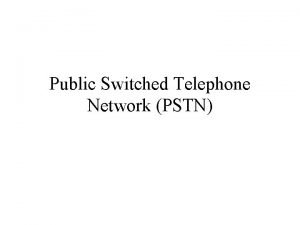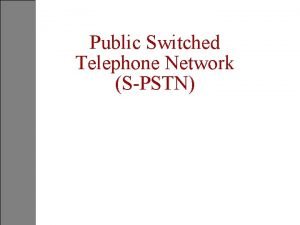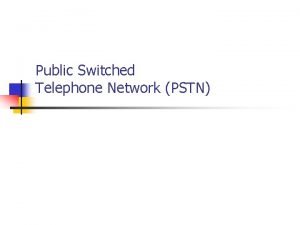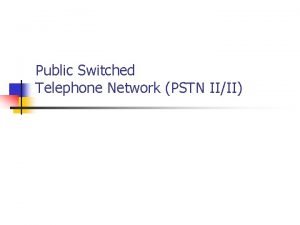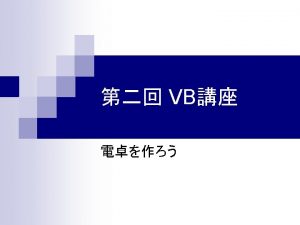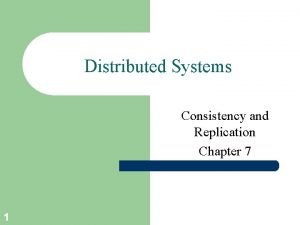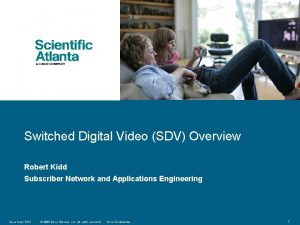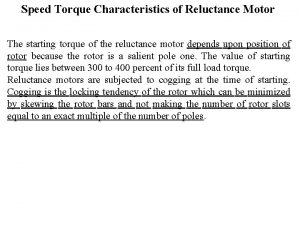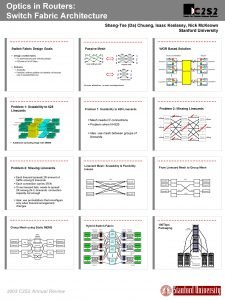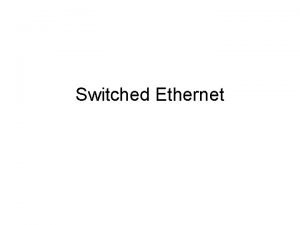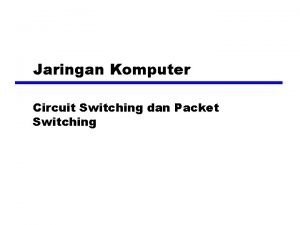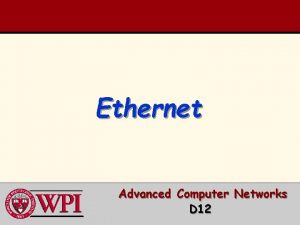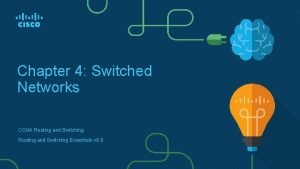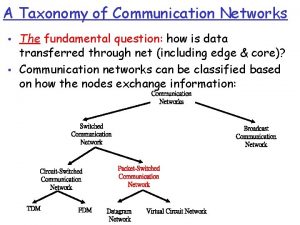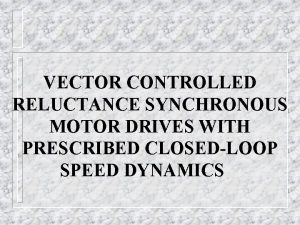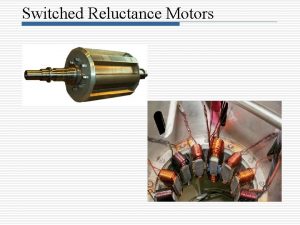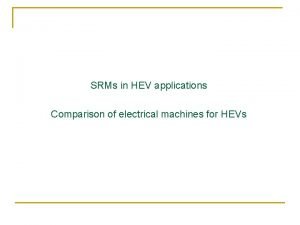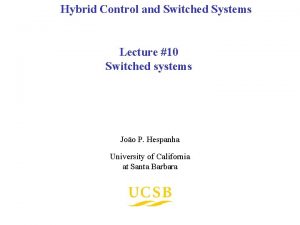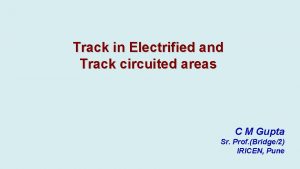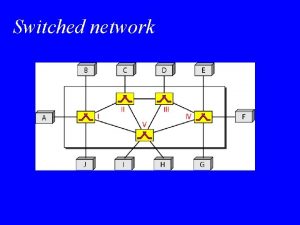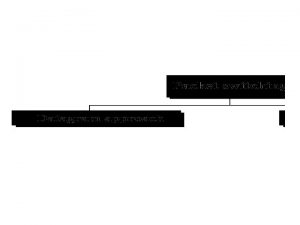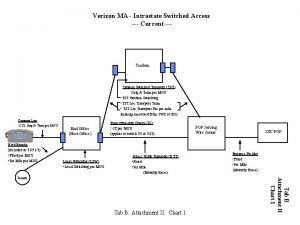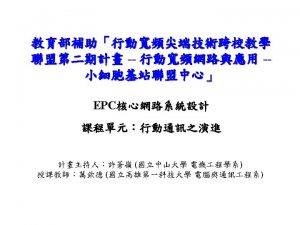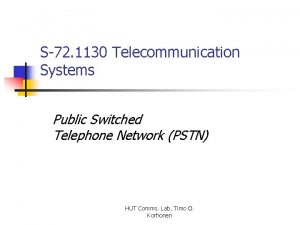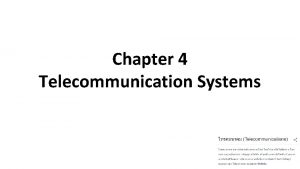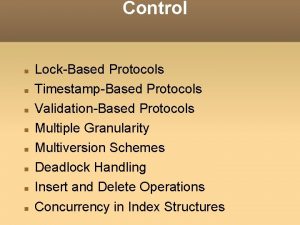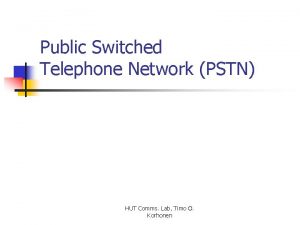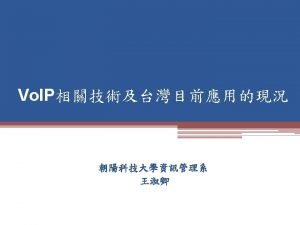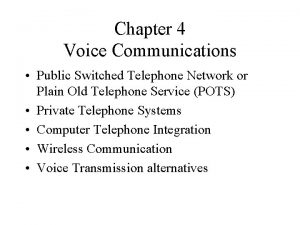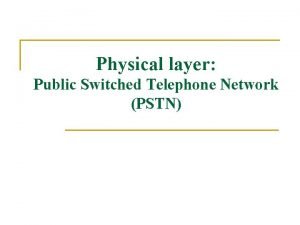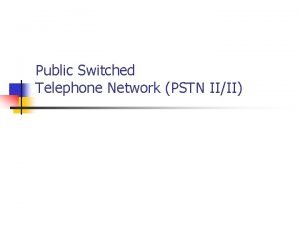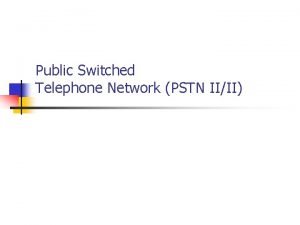CIS 725 Telephone protocols Telephone systems Circuited switched
































- Slides: 32

CIS 725 Telephone protocols

Telephone systems • Circuited switched system • Call control software

• • OCM = originating call machine TCM = terminating call machine A places a call to B An OCM for A is instantiated with initial state as idle • When signal reaches B, a TCM for B is instantiated



Off_hook dialtone number ringing ringback busy Off_hook connect

-C places a call to A - An OCM for C is instantiated -A TCM for A is instantiated with state as busy

-C places a call to B - An OCM for C is instantiated -A TCM for B is instantiated with state as busy

Call waiting feature Off_hook dialtone number ringback ringing Off_hook connect Off_hook dialtone number ringback On_hold CW_alert Flash_hook connect

Feature Interaction • Limited terminal equipment • Same key used for different purposes • Example: CW and 3 WC A is talking to B C calls B B receives the call; Call is accepted by CW; issues a tone to B Now, CW is in state ready to accept # from B

• Before listening to the tone, B presses # to call D using 3 WC CW will intercept # and connect to B to C instead.

• Call control interactions: 911 calls: only emergency operator can terminate the call

• Distributed Interactions: Call number delivery vs call number blocking Call screening vs call forwarding

Interaction Detection • Model each feature using a formal model • Depending on the current state, a feature may or may not accept a signal • Fi = accepts a signal S in state si • Fj = accepts a signal S in state sj • Can Fi and Fj be in the states si and sj simultaneously

• Explore all reachable states and check whether si and sj are simultaneously reachable • If you find interaction then avoid them

Assign priorities • Assign priorities and use layering • Example: CW and CF: CW has priority over CF

• Feature at layer N processes a signal before a feature at layer N - 1 • If feature N does not accept a signal, it passes it to the next layer

- CW has priority over CF

- CW has priority over 3 WC

Multimedia systems • Different streams of data • What are the new requirements • Qo. S requirements: - picture quality, brightness, color, tint - jitter, glitches, lip_sync, delay

Intra-media requirements • Latency: - elapsed time from packet generation to packet playback - low latency: real-time applications - high latency: email

• Jitter: - disruption in continuous playback - low jitter for real-time applications • Packet loss: - % of packets lost - video = packet loss could be high - text = low packet loss Successive packet loss

Intermedia requirements • Asynchrony: - synchronization between different streams - tight synch for tele-conferencing

Conflicts between Qo. S parameters • Jitter and latency conflict - To control jitter, value of latency must be large enough to smooth out variations in network • Asynchrony conflicts with latency

Specifying Qo. S parameters • Latency - two thresholds: lat_max, lat_min • Jitter Gap_max • Packet loss pktloss_max over time_pktloss % of successive packet loss

• Asynchrony: Async_negthres, Async_posthres

Qo. S Control • Can be implemented inside the network - streams are synchronized - virtual circuit-based systems • Can be implemented at end-systems • Combination of both techniques

Inter-media synchronization • Use a single channel to send all types of data - perfect synchronization • Master/slave channels - use one of the media as the master and synchronize others with respect to this channel

• Marker-based synchronization: - periodically insert markers in the streams; - wait for markers to arrive on all streams

Qo. S Protocol Design • Receiver-based Qo. S control • Qo. S control module: - computes the playback time for each pkt - monitors Qo. S packets - adjusts the playback time - may buffer packets or drop them

Playback time • Each Qo. S parameters influences the playback time. • Latency • Jitter • Asynchrony

Real-time Transport protocol(RTP) • Application Level Framing: - application knows its own needs - application knows how to segment data * Defines format for data packets (RTP) and control packets (RTCP) * Provides timing-related information to the application to process packets and make decisions
 Packet switching vs circuit switching
Packet switching vs circuit switching Public switched telephone network diagram
Public switched telephone network diagram Spstn
Spstn Public switched telephone network diagram
Public switched telephone network diagram Pstn
Pstn Accounting management in network management
Accounting management in network management 452 sayısının en yakın olduğu yüzlük
452 sayısının en yakın olduğu yüzlük 1,151,725 bytes
1,151,725 bytes Distributed data store
Distributed data store Clinical information system
Clinical information system Switched on science year 4
Switched on science year 4 Switched digital video
Switched digital video Capacitor blrcs
Capacitor blrcs Torque speed characteristics of switched reluctance motor
Torque speed characteristics of switched reluctance motor Switch fabric architecture
Switch fabric architecture Circuit switched wan
Circuit switched wan Backbone network architectures
Backbone network architectures North korea switched off case study
North korea switched off case study Switched ethernet vs shared ethernet
Switched ethernet vs shared ethernet Switched capacitor dc-dc converter
Switched capacitor dc-dc converter Circuit switched network adalah
Circuit switched network adalah Switched on science
Switched on science Switched pdu
Switched pdu Swiss switched witches
Swiss switched witches Cisco borderless networks
Cisco borderless networks Taxonomy of switched networks
Taxonomy of switched networks Switched reluctance motor
Switched reluctance motor Datagram vs virtual circuit
Datagram vs virtual circuit Three swiss witches
Three swiss witches A switch in a datagram network uses
A switch in a datagram network uses Introduction to switched networks
Introduction to switched networks Torque speed characteristics of switched reluctance motor
Torque speed characteristics of switched reluctance motor Switched reluctance motor
Switched reluctance motor

